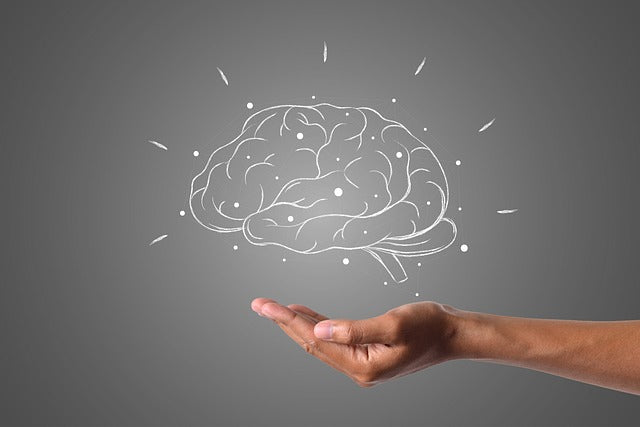The Most Powerful Antioxidant You May Not Know About
Vitamin C. Vitamin E. Glutathione. We know a lot about these potent and indispensable antioxidants and their power to boost our immune function protect our DNA from damage, and fight inflammation, toxins, free radicals, and pollutants. Vitamin C, also known as L-ascorbic acid, is a water-soluble vitamin, while Vitamin E is the collective name for a group of fat-soluble compounds. And glutathione has been called the “mother of all antioxidants” – found in surprisingly high levels in most cells, and critical for antioxidant protection and detoxification, as well as immune function.
But one of the most essential detoxifying molecules may be new to you: NAD+. It stands for nicotinamide adenine dinucleotide, and it’s a celebrated ‘anti-aging’ molecule naturally present in every cell and essential for life. Our bodies naturally make it, and foods like salmon, sardines and mushrooms, are rich sources. We can also take supplements that are building blocks for NAD+.
In the words of researchers from the Mayo Clinic, “Life as we know it cannot exist without the nucleotide nicotinamide adenine dinucleotide (NAD). From the simplest organism, such as bacteria, to the most complex multicellular organisms, NAD is a key cellular component.”[i] It is critical for DNA repair, cellular bioenergetics, genomic signaling and cell survival.[ii],[iii] It supports metabolism, energy balance, detoxification and cellular homeostasis. It has been called “one of the most important and interesting molecules in the body. It is required for over 500 enzymatic reactions and plays key roles in the regulation of almost all major biological processes.”[iv]
When we are young, we have plenty of NAD+. However, as we age we experience a steady decrease in NAD+ biosynthesis and a corresponding functional decline in organs and tissues.[v],[vi] By middle age, our NAD+ levels have plummeted to half that of our youth.[vii] By age 80, they’ve dropped almost 90%. As our energy levels drop, our immune and inflammatory responses go haywire, and our ability to detoxify is compromised.
Numerous studies have demonstrated that boosting NAD+ levels can be beneficial.[viii],[ix] Who doesn’t seek to restore youthful metabolism, detoxification ability and energy levels? Who among us isn’t hoping that science can find that elusive fountain of youth for us, so we can live vital and healthy, energetic long lives?
A Very Brief History of Free Radicals and Health
What’s so important about detoxification and antioxidant status anyway? Sixty years ago a cardiologist and chemist named Denham Harman published a surprising hypothesis that changed the way we viewed health and longevity.[x] Harman suggested that aging and sickness are due in part to the damage caused by “free radicals,” molecules that are highly reactive and damaging. Free radicals are generated by cellular metabolism, as well as by harmful pollutants from the environment.
Harman wasn’t done, though. In 1972 he published another paper suggesting that mitochondria, the energy powerhouses inside our cells, actually produce free radicals when they generate energy. And at the same time, they are damaged by those free radicals.
The big question is: how can we get enough detoxifying molecules into our cells and then through the double-membrane that surrounds every single mitochondrion?
There are many possible answers to that, but NAD+ may be one of the best. A form of NAD called NADH helps the mitochondria generate ATP, our cell’s universal energy currency.[xi] Studies have demonstrated that boosting NAD+ levels reverses mitochondrial dysfunction, and extends lifespan.[xii],[xiii] This is why increasing levels of NAD+ is the keystone in the arch of regenerative medicine with all its innovation and promise. By helping maintain youthful metabolism, serving as an antioxidant, and supporting healthy energy levels, NAD+ almost seems like that proverbial fountain of youth.
A Little Bit About NAD+ And How Our Bodies Make It
Our body makes NAD+ from foods in our diet, and particularly rich sources include salmon, sardines, and mushrooms. Vitamin B3 (niacin) and tryptophan are both important building blocks for NAD+. NAD+ can also be synthesized from two special molecules – nicotinamide riboside (NR) and nicotinamide mononucleotide (NMN).[xiv],[xv]
NMN has received a lot of attention lately. It is naturally found in small amounts in fruits and vegetables such as avocados, broccoli, cabbage, edamame, and cucumbers.[xvi] New science shows that our own fatty tissue actively secretes little “rafts” (called extracellular vesicles or EVs) that are enriched with NMN, and can circulate through our body to deliver their precious cargo wherever needed.[xvii] And it appears that NMN can travel right across the cell membrane, into the cell itself. In 2019, the scientific world was taken by surprise when it was announced that NMN has its own dedicated transporter to do that—a special enzyme that helps carry it across the cell membrane and directly into cells.[xviii] So, NMN to the rescue! Ferry it right over the “cell line” and into the cell where it can be transformed into NAD+ to choreograph hundreds of cellular processes including detoxification.
What One Expert Scientist Thinks About NAD+
David Sinclair is a Harvard scientist who is famous for his groundbreaking research into a family of proteins in our bodies called sirtuins, that play a central role in inflammation, cell growth, circadian rhythms, energy metabolism, neuronal function, and stress resistance.[xix] Sinclair’s research into the health and longevity effects of resveratrol—a compound found in wine and grapes—is world renowned. Sinclair has authored and coauthored multiple studies and papers on NAD+. He and his colleagues are now conducting human studies on NAD+. To support his own NAD+ levels he is taking NMN and he has publicly stated that his lipid profile has improved dramatically, he feels more energetic and that his blood markers, at 50 years old, are closer to those of a 31-year-old.[xx],[xxi]
*NAD+ Contributes to Healthy Insulin Responses. As we age, our metabolism slows down, and our insulin response may become blunted. We suffer from “insulin resistance”, which means our cells need more insulin in order to process sugar. This is especially true with the high-carbohydrate load of the western diet. With healthy levels of NAD+, our glucose tolerance is improved and oxidative stress is eased.[xxii],[xxiii] Our cholesterol levels also improve.6 Healthy levels of NAD+ help protect against diet- and age-associated weight gain.
*Muscles and Endurance Rely on NAD+. When NAD+ levels are optimal, stamina and endurance are higher.6 NAD+ helps the function of mitochondria in skeletal muscle.20 NAD+ is associated with a healthy vascular system as well.[xxiv]
*The Liver Needs NAD+
The marvelous liver’s job is to continually detoxify and neutralize harmful substances so they can be excreted safely from the body. Perhaps it’s not surprising that with our poor diets, our polluted environments and our sedentary lifestyles, the liver is under stress. High levels of oxidative stress and inflammation activity in the liver can be associated with lower levels of NAD+. Studies in animals show that by preserving NAD+ levels, both the kidney and liver can be protected from injury.[xxv] Even the liver’s mitochondria respond well to NAD+.[xxvi]
Long term NMN supplementation has been shown to protect against both diet- and age-associated weight gain, which often affects the liver.5 NMN can actually restore NAD+ levels that have been depleted due to a high-fat-diet and excess weight.[xxvii] NMN helps support normal insulin sensitivity in the liver as well.
*Our Mitochondria Stay Healthy With Optimal NAD+ Levels
More and more research is showing how important mitochondria are to our overall health. When mitochondrial function declines, we are more vulnerable to the effects of aging and cannot detoxify as well.[xxviii] New evidence shows that our mitochondria directly import intact NAD+ from the interior of the cell itself.[xxix] Clearly, those little energy powerhouses inside our cells are relying on NAD+ to help them function.
These are heady times for research into health, detoxification and longevity. We know far more today than we did ten or twenty years ago about the ways in which diet, exercise and nutraceuticals support optimal health. Molecules like NAD+ hold the promise of increasing the body’s resilience, not just to one disease, but to many.
References
[i]Chini CCS et al. NAD and the aging process: Role in life, death and everything in between Mol Cell Endocrinol. 2017 Nov 5;455:62-74. View Full Paper
[ii]Longo VD et al. Interventions to Slow Aging in Humans: Are We Ready? Aging Cell 14 (4): 497-510. View Abstract
[iii]Fang EF et al. NAD (+) in aging: molecular mechanisms and translational implications. Trends Mol Med. 2017;23(10):899–916 View Abstract
[iv]Rajman L et al. Therapeutic potential of NAD-Boosting molecules: The in vivo evidence. Cell Metab. 2018 Mar 6;27(3):529-547. View Abstract
[v]Imai S. The NAD World 2.0: the importance of the inter-tissue communication mediated by NAMPT/NAD+/SIRT1 in mammalian aging and longevity control. NPJ Syst Biol Appl. 2016 Aug 18;2:16018 View Full Paper
[vi]Massudi H et al. Age-associated changes in oxidative stress and NAD+ metabolism in human tissue PLoS One. 2012;7(7):e42357 View Abstract
[vii]Zhu XH et al. In vivo NAD assay revels the intracellular NAD contents and redox state in healthy human brain and their age dependences. Proc. Natl. Acad. Sci. 2015; 112:2876–2881 View Full Paper
[viii]Suave AA. NAD+ and vitamin B3: from metabolism to therapies J Pharmacol Exp Ther. 2008 Mar;324(3):883-93 View Abstract
[ix]Lee CF et al. Targeting NAD+ Metabolism as Interventions for Mitochondrial Disease. Sci Rep. 2019 Feb 28;9(1):3073 View Full Paper
[x]Harman, D Aging: a theory based on free radical and radiation chemistry. Journal of Gerontology 1956, 11 (3): 298–300. View Abstract
[xi]Wallace DC. Mitochondria and cancer. Nat. Rev. Cancer 2012 12, 685–698. View Abstract
[xii]Suave AA. NAD+ and vitamin B3: from metabolism to therapies J Pharmacol Exp Ther. 2008 Mar;324(3):883-93 View Abstract
[xiii]Lee CF et al. Targeting NAD+ Metabolism as Interventions for Mitochondrial Disease. Sci Rep. 2019 Feb 28;9(1):3073 View Full Paper
[xiv]Camacho-Pereira J et al. CD38 Dictates Age-Related NAD Decline and Mitochondrial Dysfunction through an SIRT3-Dependent Mechanism. Cell Metab. 2016 Jun 14;23(6):1127-1139 View Full Paper
[xv]Longo VD et al. Interventions to Slow Aging in Humans: Are We Ready? Aging Cell 14 (4): 497-510. View Full Paper
[xvi]Revollo JR et al. The NAD biosynthesis pathway mediated by nicotinamide phosphoribosyltransferase regulates Sir2 activity in mammalian cells. J Biol Chem. 2004; 279:50754–50763 View Abstract
[xvii]Yoshida M. Extracellular vesicle-contained eNAMPT delays aging and extends lifespan in mice. Cell Metab. 2019 Aug 6;30(2):329-342.e5 View Abstract
[xviii]Wu LE et al. The elusive NMN transporter is found. Nat Metabo 2019;1(1):8-9 View Full Paper
[xix]Gertler AA et al. SIRT6, a protein with many faces. Biogerontology. 2013;14:629–639. View Abstract
[xx]Bolotnikova MN. Anti-aging approaches. Harvard Magazine. Sept-Oct 2017. Available at: https://harvardmagazine.com/2017/09/anti-aging-breakthrough Accessed 9-1-2019
[xxi]Taylor M. Scientists may be closer than you think to an anti-aging pill. But beware of the hype. Kaiser Health News. Available at: https://www.tampabay.com/health/medical-news/scientists-may-be-closer-than-you-think-to-an-anti-aging-pill-but-beware-of-the-hype-20190212/ Accessed 9-1-2019
[xxii]Yoshino J et al. Nicotinamide mononucleotide, a key NAD (+) intermediate, treats the pathophysiology of diet- and age-induced diabetes in mice. Cell Metab. 2011;14(4):528–36 View Full Paper
[xxiii]Canto C, et al. The NAD (+) precursor nicotinamide riboside enhances oxidative metabolism and protects against high-fat diet-induced obesity. Cell Metab. 2012;15(6):838–47 View Full Paper
[xxiv]De Picciotto NE et al. Nicotinamide mononucleotide supplementation reverses vascular dysfunction and oxidative stress with aging in mice. Aging Cell 2016, 15, 522–530. View Full Paper
[xxv] Katsyuba E et al. De novo NAD synthesis enhances mitochondrial function and improves health. Nature, 2018 563, 354–359 View Abstract
[xxvi]Dall M et al. Mitochondrial function in liver cells is resistant to perturbations in NAD+ salvage capacity. J Biol Chem. 2019 Sep 6;294(36):13304-13326 View Abstract
[xxvii]Uddin GM et al. Head to Head Comparison of Short-Term Treatment with the NAD(+) Precursor Nicotinamide Mononucleotide (NMN) and 6 Weeks of Exercise in Obese Female Mice. Front. Pharmacol. 2016, 7, 258 View Full Paper
[xxviii]Lou G et al. Mitophagy and neuroprotection. Trends Mol. Med. 2019 View Full Paper
[xxix]Davila A et al. Nicotinamide adenine dinucleotide is transported into mammalian mitochondria. Elife. 2018 Jun 12;7 View Full Paper




